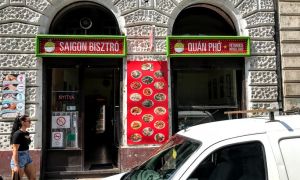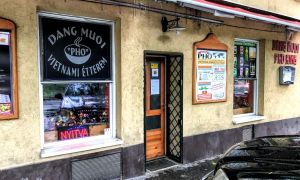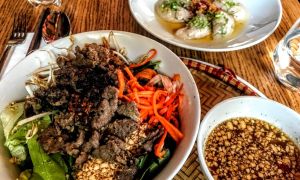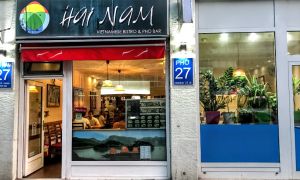Communist Hungary accepted immigrants from northern Vietnam and still today Budapest has a sizable Vietnamese community with restaurants to match. Unfortunately, many places limit their offerings to dishes they believe Hungarian diners can handle. But the places below stand out from the sea of Budapest's pho restaurants, also serving Vietnamese staples like com dia (over-rice dishes), banh cuon (steamed rice rolls), bun cha (grilled pork and noodle), canh chua (sour soups), ca kho to (caramelized fish), and banh xèo (sizzling pancake).
Lined with Thai, Indian, Korean, and Vietnamese restaurants near one another, Budapest’s sleepy Szondi Street in District 6 is a paradise of international food. Saigon Bistro, a humble, takeout-looking spot, is one of the few Southern Vietnamese places in Budapest — Hungary took immigrants from the Communist north during the Vietnam War — which means that the dishes here are more gussied up with garnishes and sweeter flavors than elsewhere.
Although Vietnam’s national dish, the pho, will not disappoint, it's the “Saigon soup” (hủ tiếu) that sings. Imagine a steaming bowl of concentrated broth packing parsley, mint, Thai basil, ginger, lemongrass, and also beef, shrimp, pork, and glass noodles. All this topped with a couple of soft quail eggs. I only wish the portion was a little heartier. Alone in Budapest, Saigon Bistro also serves banh cuon, rice-noodle rolls filled with minced pork (they're only available on Saturdays, or if you call in advance).











